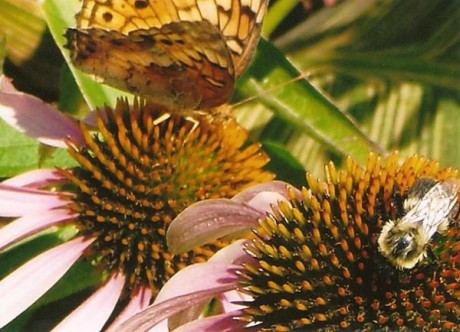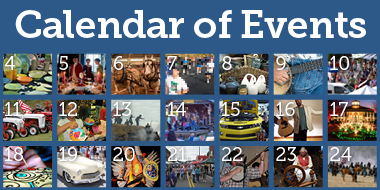Bees, Birds & Other Beasts
How to make your yard attractive to wildlife
By Amy NeyBlooming trees, shrubs and flowers begin filling home improvement stores and garden centers in early spring. And North Carolinians respond to the appeal by purchasing and planting these showy plants. But how do you know what to plant and when you should really plant it? How do you choose the right tree or shrub? Which flowers are best for your site?
Instead of starting your landscaping project at your local garden center, you might start in your backyard instead. North Carolina's rapidly increasing population is causing a decreasing amount of available wildlife habitat. Plants in your backyard can easily be aesthetically pleasing and at the same time help local wildlife.
All wildlife require food, water and shelter; the first step is to discover the specific needs of the wildlife species that you would like to attract.
Songbirds thrive in a variety of plant layers (trees, shrubs and groundcover) and feed on plants that provide fruit and seeds throughout the year. Evergreens such as American holly provide cover in every season, while deciduous trees may provide cover as well as food during the warmer months. Natural sources may be supplemented with bird feeders, houses and baths, but take care to avoid placing these where predators such as snakes and cats can find an easy meal.
Hummingbirds tend to migrate south in the winter, but they can be attracted during the warmer months with a variety of plants that provide nectar, especially those with tubular flowers such as trumpet vine and red buckeye.
Butterflies require a variety of caterpillar host plants (monarch caterpillars only eat milkweed leaves) as well as nectar plants with flowers of varying sizes, depths, and bloom times. Butterflies like sunny areas, and males need small puddles that aid in reproduction.
Turkeys like large areas of winter, nesting and brood range habitat with mature hardwood forest, open understory and water sources.
Squirrels prefer trees with hard nuts or fruits and den holes and can utilize dew and plant material as a water source.
As you plan, carefully consider the needs of the animals you would like to attract as well as their compatibility with people and other animals. It is not smart or safe to feed or otherwise attract bears or other predators to human habitat.
Draft a plan
The second step in creating your backyard habitat is to diagram your site and existing vegetation. This could range from an actual base map drawn to scale to a rough sketch of your land. It is recommended that you record what wildlife uses your property over an entire year and note what plants are producing flowers, fruit and seeds in different seasons. Based on what animals you would like to attract, and what habitat requirements are lacking in your yard, you can choose plants to fill in the gaps. You might also add water features, benches and other items to increase aesthetics and aid in viewing wildlife.
Next, draft a plan for planting and installation. As you create your plant list, be sure to select a variety of native plants. (Nonnatives usually have less wildlife value, require more care, and may impinge on the growing space and needs of surrounding native plants.) Consider the shape, growth form, colors and textures of plants. Make sure each has adequate space to grow to maturity, both in height and diameter. Canopy trees will be focal points with shrub and groundcover layers underneath. Also take into account the moisture, light, region and soil preferences of the plants you choose. You might even consider replacing all or part of your lawn with plants easier to care for and more beneficial to wildlife.
Lastly, you'll want to actually purchase and place your chosen items. This can be completed in stages over time — it does not have to be done all at once! Follow proper planting guidelines by digging a large enough hole, replacing the original soil and giving the appropriate amount of water. Because North Carolina summers may be very hot, most native plants fare better if planted in the fall.
Designing a backyard habitat may seem overwhelming, but not if you consider it a work in progress. There are numerous resources to help you, including your local Cooperative Extension agents and nursery owners. (Be sure to always ask for natives, as many nurseries sell known exotic invasive plants.) Free extension publications such as "Landscaping for Wildlife with Native Plants" (AG-636-03) and the Going Native website (www.ncsu.edu/goingnative) can help you choose plants beneficial to you and wildlife. The National Wildlife Foundation (www.nwf.org) will even certify your backyard habitat if it provides all the habitat essentials. So be creative, have fun, and get planting!
-
Share this story:




